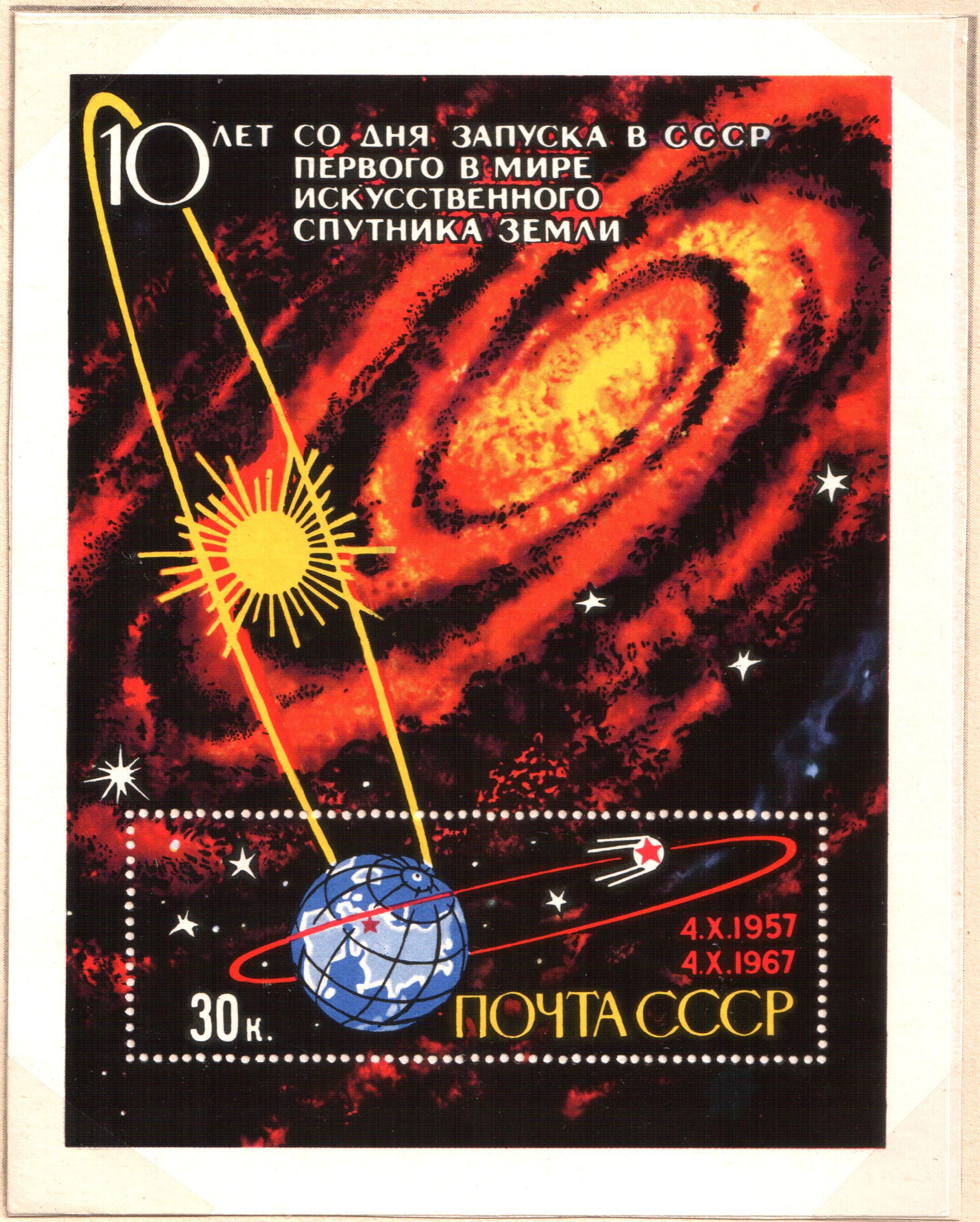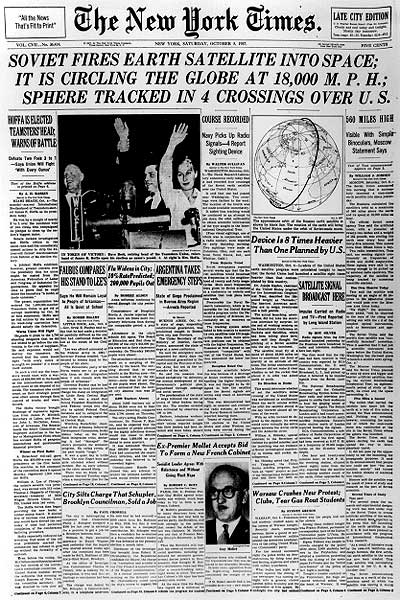
Sharp-eyed stargazers on the night of October 4, 1957, would have noticed a tiny unblinking point of light moving silently across the night sky, its glow waxing and waning.

The world in those days was far less polluted by background light than it is today: interstate freeways were still a theoretical idea, electric lighting had yet to spread to many parts of the world, and 24-hour businesses were virtually unheard of. Much of the world remained agrarian and used premodern lighting by candle or kerosene. Yet the tiny light that tracked across the unpolluted cosmos of 1957 was a herald of the future.
The next morning, Pravda, and other Soviet newspapers, announced “the first successful launch of a satellite” to the world. Pravda put a distinctively communist spin on the news, arguing that “artificial satellites from the Earth will pave the way to interplanetary travel… our contemporaries are destined to witness how the freed and meaningful labor of the people of the new, socialist society will transform humanity’s most daring dreams into a reality.”
American officials – who surely numbered among the unnamed “contemporaries” that Pravda had in mind – were flabbergasted. Although both the Soviets and the United States had been preparing long-distance rocket programs since the early 1950s, the launch of Sputnik caught President Dwight D. Eisenhower’s administration by surprise.
In public, of course, the President sought to downplay the news, laconically describing it as “one small ball in the air.” A presidential aide, Sherman Adams, took an even more disdainful stance: he quipped that American satellites (when they appeared) would be used for legitimate research and not for competition in what he called “an outer-space basketball game.”
Privately, however, the officials of the United States government were profoundly disturbed by Sputnik’s implications: the Soviets had successfully launched a man-made object into earth orbit. This meant that the R-7 Sputnik rocket that carried the probe into orbit could be readily re-purposed as a delivery system for intercontinental nuclear weapons, a scenario that transformed the balance of power between the two emerging superpowers.
Equally worrisome was the larger message sent by the tiny sphere: Soviet technology was more advanced than that of the United States. In 1958, philosopher Hannah Arendt went so far as to proclaim that Sputnik was an event “second in importance to no other, not even the splitting of the atom” – a troubling thought for American technocrats.
The futuristic and high-technology nature of the event had been celebrated loudly by the Soviet state, which was intent on depicting Marxism-Leninism as leading the vanguard of a new era of technological innovation, ambitious social projects, and marvels of engineering. Sputnik was only one of a number of other projects that highlighted the cutting-edge work of Soviet nuclear physicists, cosmologists, biologists, architects, filmmakers and engineers. Sputnik’s launch simultaneously initiated the United States into a race that it did not yet know it was running – the Space Race – and indicated that the Americans were lagging behind.
Although Sputnik’s launch came as a surprise to the world, it had become clear by the early 1950s that advanced rocketry and telemetry systems developed during World War II could be repurposed for space flight. As early as July 22, 1951, two dogs named Dezik and Tsygan (“Gypsy”) had been launched onboard Soviet R-1 rockets to sub-orbital altitudes at around 110 km, on the very edge of space (both dogs returned unharmed and Tsygan was adopted by the Soviet physicist Anatoli Blagonravov.) The flights of these “space dogs” continued throughout the 1950s.
By comparison, United States space technology lagged behind – although the US government was developing trans-continental ballistic missiles to deliver nuclear warheads in this period, their focus was squarely on military applications and not on spaceflight. Sputnik’s launch into earth orbit – a substantially more challenging feat than the suborbital flights of the space dogs – spurred the US government into what would become the Space Race and led directly to the earliest NASA missions.
Sputnik also inspired the formation of the Advanced Research Projects Agency (ARPA, or later DARPA), which was tasked with creating an American satellite to match Sputnik’s achievement – and which would in the 1960s develop the electronic communications infrastructure that gave rise to the Internet.
Sputnik was no less influential in the realm of culture and society. American children gathered in public parks, schoolyards and backyards to catch a glimpse of the tiny dot of light as it orbited the earth (what was visible was actually the rocket booster that carried Sputnik into orbit rather than the satellite itself). The sight helped inspire the first generation of NASA astronauts and rocket engineers, including Allan Shepherd and Homer Hickam.
More generally, it contributed to a cultural fascination with outer space, extraterrestrials, and science fiction. Among other things, it inspired the so-called “Populuxe” style of late 1950s and early 1960s industrial design, which was characterized by sleak, Sputnik-inspired metalloid forms, parabolas, and modernist rocket motifs. The Space Age was in some ways as much a creation of filmmakers, short-story writers, architects, designers and artists as it was an initiative of the United States and Soviet governments.
By the late 1960s and early 1970s, however, the Space Age was coming to an end, supplanted by a turn toward nature and cynicism regarding the supposed triumph of high technology and scientific rationality that space flight represented.
Today, however, a new Space Race is on the horizon. Two emerging superpowers – India and China – are currently competing to reach the moon, and China has already sent an astronaut into earth orbit (2003), completed a spacewalk (2008) and a docking (2012) with plans to send a lunar rover to the moon in late 2013.
Meanwhile, with the retirement of the Shuttle fleet earlier this year, the United States finds itself without its own dedicated spacecraft for the first time since the era of Sputnik. For-profit corporations financed by billionaires like Richard Branson’s Virgin Galactic and Jeff Bezos’ Blue Horizon have stepped in to fill the gap.

